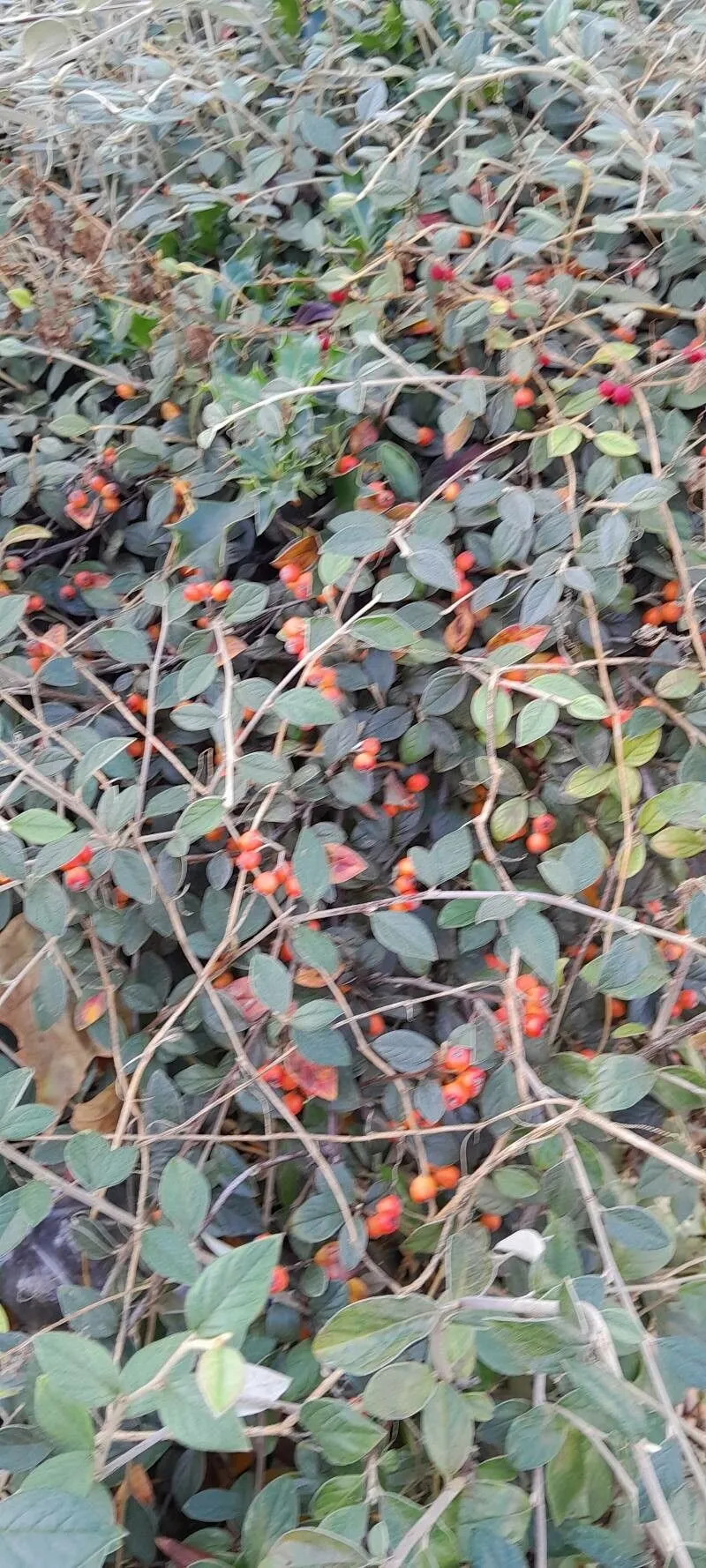
Author: Bois
Bibliography: Rev. Hort. (Paris) 2: 380 (1902)
Year: 1902
Status: accepted
Rank: species
Genus: Cotoneaster
Vegetable: False
Observations: SE. Tibet to SC. China and N. Thailand
Franchet’s cotoneaster, known scientifically as Cotoneaster franchetii, is a vibrant and resilient member of the Rosaceae family. First described in 1902 by the botanist Bois and documented in the “Revue Horticole” in Paris, this plant has since captivated gardeners and horticulturists alike with its adaptability and aesthetic appeal.
Native to a region that spans from southeastern Tibet to south-central China and northern Thailand, Franchet’s cotoneaster thrives in diverse climates and terrains. This geographic range indicates the plant’s remarkable ability to adapt to various environmental conditions, making it a versatile choice for gardens worldwide.
The Franchet’s cotoneaster displays an array of attractive features. It is a semi-evergreen shrub, meaning it retains some of its foliage throughout the winter, providing year-round interest. Its leaves are small, elliptical, and usually dark green on the upper side with a distinctive grayish-green underside that adds a subtle contrast. During the spring and summer, the plant is adorned with clusters of small, white to pinkish flowers, which later give way to bright red or orange berries in the fall. These berries are not only visually appealing but also attract birds, thus adding an element of wildlife interest to gardens.
Given its origins in the diverse climates of Tibet, China, and Thailand, Franchet’s cotoneaster is well-suited to a variety of garden settings. It can be used effectively as ground cover, a low hedge, or even a specimen plant. Its resilience against pests and diseases, combined with its low maintenance needs, makes it an attractive option for both novice and experienced gardeners.
In conclusion, Franchet’s cotoneaster (Cotoneaster franchetii) is a testament to the beauty and diversity of the plant world, offering aesthetic and ecological benefits. Its rich history and widespread adaptability ensure that it will continue to be a valued addition to gardens and landscapes for years to come.
Fra: cotonéaster de franchet
Eng: franchet’s cotoneaster, franchets cotoneaster, orange cotoneaster
Deu: franchet-steinmispel, franchet-zwergmispel, franchets zwergmispel
Por: cotoneaster
Afr: dwergmispel, oranje cotoneaster
Swe: koralloxbär
Cym: cotoneaster franchet
Nld: franchet’s cotoneaster, witte boogcotoneaster
En: Franchet’s cotoneaster, Orange cotoneaster, Franchet Cotoneaster, Franchets Cotoneaster
Af: Dwergmispel, Oranje cotoneaster
Zh: Xi nan xun zi, 西南栒子
Cs: Skalník Franchetův
Nl: Franchet’s cotoneaster, Witte boogcotoneaster
Fr: Cotonéaster de Franchet
De: Franchets Zwergmispel, Immergrüne Zwergmispel, Schleppen-Felsenmispel, Wintergrüne Zwergmispel, Franchet-Steinmispel, Franchet-Zwergmispel
It: Cotognastro di Franchet
Pt: Cotoneaster
Sv: Koralloxbär
Cy: Cotoneaster Franchet
Taken Oct 6, 2019 by Francois Mansour (cc-by-sa)
Taken Nov 24, 2022 by Fabrice Rubio (cc-by-sa)
Taken Jan 10, 2019 by Manu Pacha (cc-by-sa)
Taken Dec 8, 2021 by Tamás Irsai (cc-by-sa)
Taken Sep 19, 2018 by Cornel Buzea (cc-by-sa)
Taken Oct 22, 2019 by Vincent Daubin (cc-by-sa)
Taken Nov 11, 2022 by Ryszard Porebski (cc-by-sa)
Taken Nov 24, 2022 by Fabrice Rubio (cc-by-sa)
Taken Jan 10, 2019 by Manu Pacha (cc-by-sa)
Taken Jan 10, 2019 by Manu Pacha (cc-by-sa)
Taken Nov 3, 2022 by macap93 (cc-by-sa)
Taken Jan 31, 2014 by Tela Botanica − Emmanuel STRATMAINS (cc-by-sa)
Taken Dec 9, 2021 by Fabrice Rubio (cc-by-sa)
Taken Nov 29, 2022 by Fabrice Rubio (cc-by-sa)
Taken Nov 24, 2022 by Fabrice Rubio (cc-by-sa)
Taken Mar 12, 2022 by Jp Garnier (cc-by-sa)
Taken Jun 16, 2019 by svenja andrade (cc-by-sa)
Taken Feb 8, 2022 by Johanna Gautier (cc-by-sa)
Taken Nov 10, 2022 by Caw Vus (cc-by-sa)
Taken Feb 2, 2022 by Tristan Jaton-Maria (cc-by-sa)
Taken Jun 5, 2019 by Flo v (cc-by-sa)
Taken Oct 26, 2021 by Sandrine Durot (cc-by-sa)
Taken May 14, 2020 by véronique idiart (cc-by-sa)
Taken Jun 24, 2016 by Tela Botanica − Florent BECK (cc-by-sa)
Taken May 30, 2020 by max paule (cc-by-sa)
Taken Aug 3, 2012 by Tela Botanica − David MERCIER (cc-by-sa)
Taken Jun 22, 2022 by Jan McW (cc-by-sa)
Taken Jul 31, 2014 by Tela Botanica − jeanmichel (cc-by-sa)
Taken Jan 1, 1900 by EOL − Encyclopedia of Life (cc-by-nc-sa)
Taken Dec 1, 2022 by Stéphane Adamowicz (cc-by-sa)
© copyright of the Board of Trustees of the Royal Botanic Gardens, Kew.
© copyright of the Board of Trustees of the Royal Botanic Gardens, Kew.
Growth habit: Shrub
Family: Myrtaceae Author: (F.Muell.) K.D.Hill & L.A.S.Johnson Bibliography: Telopea 6: 402 (1995) Year: 1995 Status:…
Family: Rubiaceae Author: Pierre ex A.Froehner Bibliography: Notizbl. Bot. Gart. Berlin-Dahlem 1: 237 (1897) Year:…
Family: Sapindaceae Author: Koidz. Bibliography: J. Coll. Sci. Imp. Univ. Tokyo 32(1): 38 (1911) Year:…
Family: Asteraceae Author: A.Gray Bibliography: Pacif. Railr. Rep.: 107 (1857) Year: 1857 Status: accepted Rank:…
Family: Fabaceae Author: Medik. Bibliography: Vorles. Churpfälz. Phys.-Ökon. Ges. 2: 398 (1787) Year: 1787 Status:…
Family: Aspleniaceae Author: (Cav.) Alston Bibliography: Bull. Misc. Inform. Kew 1932: 309 (1932) Year: 1932…